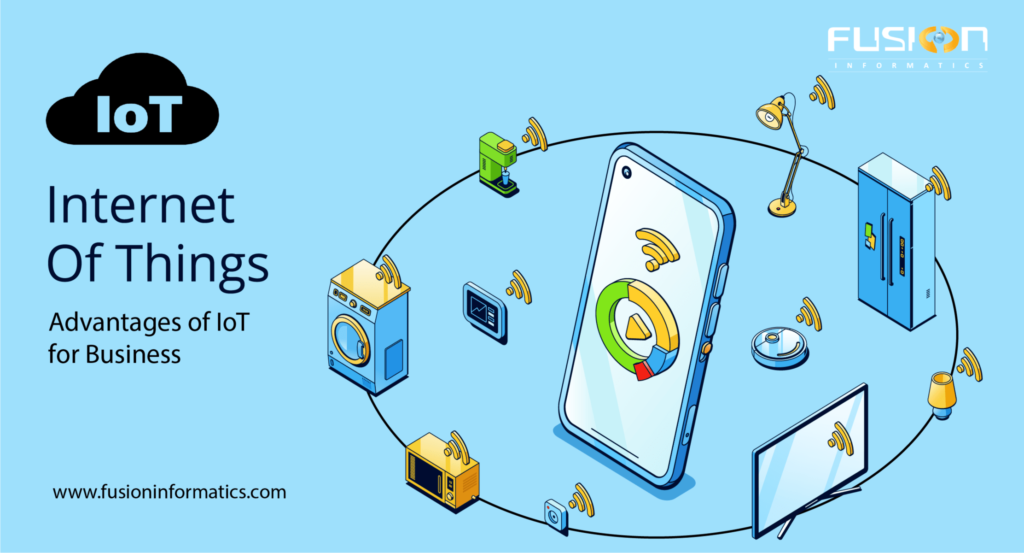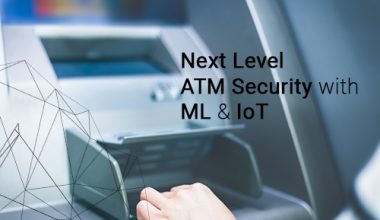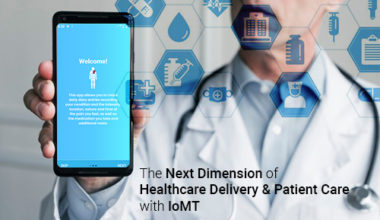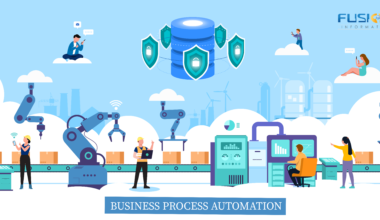The Internet of Things, or IoT, refers to a network of interconnected devices as well as the technology that enables communication between devices and the cloud as well as between devices. Thanks to the development of low-cost computer chips and high-bandwidth telecommunication, we now have billions of devices connected to the internet.
This means that everyday objects such as toothbrushes, vacuum cleaners, automobiles, and machines can collect data and respond intelligently to users.
The Internet of Things connects commonplace “things” to the internet. Since the 1990s, computer engineers have been adding sensors and processors to everyday objects.
However, because the chips were large and bulky, progress was initially slow. RFID tags, which are low-power computer chips, were first used to track expensive equipment. These chips became smaller, faster, and smarter over time as computing devices shrank in size.
The cost of incorporating computing power into small objects has now significantly decreased. MCUs with less than 1 MB of embedded RAM, such as light switches, can be connected with Alexa voice service capabilities, for example. The goal of incorporating IoT devices into our homes, businesses, and offices has spawned an entire industry. These intelligent objects can transmit and receive data from the Internet on their own.
The Internet of Things refers to all of these “invisible computing devices” and the technology that goes with them.

How Does The Internet of Things Work?
A typical IoT system operates by collecting and exchanging data in real-time. An IoT system is made up of three parts:
IoT Application
An IoT application is a set of services and software that combine data from various IoT devices. It analyses this data and makes informed decisions using machine learning or artificial intelligence (AI) technology. These decisions are communicated to the IoT device, which responds intelligently to inputs.
Smart Devices
This is a device with computing capabilities, such as a television, security camera, or exercise equipment. It collects data from its surroundings, user inputs, or usage patterns and transmits it to and from its IoT application via the internet.
A Graphical User Interface (GUI)
A graphical user interface can be used to manage an IoT device or fleet of devices. A mobile application or website that can be used to register and control smart devices is a common example.
What are The Advantages of The IoT for Businesses?
Boost Innovation
The Internet of Things provides businesses with advanced analytics that help them discover new opportunities. Businesses, for example, can create highly targeted advertising campaigns by gathering data on customer behavior.
AI and machine learning can help you turn data into insights and actions
Data gathered and historical trends can be used to forecast future outcomes. Warranty information, for example, can be combined with IoT data to predict maintenance incidents. This can be used to provide proactive customer service and increase customer loyalty.
Improve Security
Continuous monitoring of digital and physical infrastructure can improve performance, efficiency, and safety. Data from an onsite monitor, for example, can be combined with hardware and firmware version data to automatically schedule system updates.
Scale-diffused Solutions
To increase customer satisfaction, IoT technologies can be deployed in a customer-centric manner. Trending products, for example, can be restocked quickly to avoid shortages.
What are the various IoT Technologies?
IoT systems may employ the following technologies:
Edge Computing
The technology that enables smart devices to do more than just send and receive data from their IoT platform is known as edge computing. It boosts computing power at the network’s edges, lowering communication latency and improving response time.
Cloud Computing
Cloud technology is used for remote data storage and IoT device management, making data available to multiple network devices.
Machine Learning
The software and algorithms used to process data and make real-time decisions based on that data are referred to as machine learning. These machine learning algorithms can be deployed in the cloud or on-premises.
Examples of IoT Systems
Smart cities: IoT applications have improved the efficiency of urban planning and infrastructure maintenance. Governments are utilizing IoT applications to address infrastructure, health, and environmental issues.
Connected Homes: Smart home devices are primarily intended to improve home efficiency and safety, as well as home networking. Smart outlets monitor electricity usage, and smart thermostats improve temperature control. IoT sensors can be used to manage gardens in hydroponic systems, and IoT smoke detectors can detect tobacco smoke. Door locks, security cameras, and water leak detectors are examples of home security systems that can detect and prevent threats while also alerting homeowners.
Connected Cars: Vehicles, such as cars, can be connected to the internet in a variety of ways. Smart dashcams, infotainment systems, and even the vehicle’s connected gateway can be used. To monitor both driver performance and vehicle health, they collect data from the accelerator, brakes, speedometer, odometer, wheels, and fuel tanks.
Smart buildings: IoT applications are used in buildings such as college campuses and commercial buildings to improve operational efficiencies. IoT devices can be used in smart buildings to reduce energy consumption, lower maintenance costs, and make better use of workspaces, among other things.
Benefits of IoT
Numerous benefits are made possible by the Internet of Things in our daily lives. Below are a few of its benefits:
Reduce human effort: IoT devices can automate jobs as they interact and communicate with one another, enhancing the quality of a company’s services and requiring less human involvement. .
Saves time: It saves a lot of our time by lowering the amount of human work. One of the main benefits of using the IoT platform is time savings
Improved data collection: Information is readily available, even when we are far from our actual position, and it is regularly updated in real-time. As a result, these gadgets can access data from any location at any time on any device.
Better security: A connected system can help us govern homes and cities more intelligently via mobile devices. It gives safety for the individual and improves security.
Effective resource management: By understanding the features and operation of each gadget, we can improve resource management and keep an eye on natural resources.
Reduced usage of other electrical devices: Due to direct connections and the ability to communicate with a controller computer, such as a mobile phone, efficient use of electricity is made possible. There won’t be any pointless use of electrical equipment as a result.
Utilization in traffic systems: The traffic tracking system employing IoT technology may make asset tracking, delivery, surveillance, traffic or transportation tracking, inventory control, individual order tracking, and customer management more cost-effective.
Safeguarding concerns: Because it alerts users to any potential threat, it is useful for safety. For instance, in the event of a collision or accident, it calls promptly.
Beneficial for the healthcare sector: Without the requirement for a doctor’s visit, patient care can be provided more successfully in real-time. It enables them to make decisions and deliver care based on the best available evidence.
The number of devices that are connected across the globe is staggeringly high and will grow exponentially in the years to come.
Challenges in IoT
While the Internet of Things offers benefits, it also generates a sizable number of challenges, such as:
Security issues: IoT systems are networked and connected, which raises security concerns. Therefore, despite any security precautions, the system offers limited control and is vulnerable to several types of network attacks.
Privacy concern: Without the user’s voluntary engagement, the IoT system provides essential personal data in complete detail.
Increased unemployment: There is a significant risk of job loss faced by both skilled and unskilled workers, contributing to high unemployment rates. Robots, smart ironing boards, smart washing machines, and other devices are taking the place of the humans who used to perform these tasks manually.
System complexity: The extensive technology to IoT systems is highly complicated to design, build, manage, and enable.
High probability that the entire system will become corrupted: If the system has a problem, it’s probable that every linked device will also get affected.
Lack of global standards: It is difficult for devices from various manufacturers to connect with one another because there is no global standard for IoT interoperability.
High dependency on the internet: They have a high reliance on the internet and are unable to function well without it.
Reduced mental and physical activity: People who use technology and the internet excessively become passive and sedentary because they rely on their smart devices rather than working physically.



